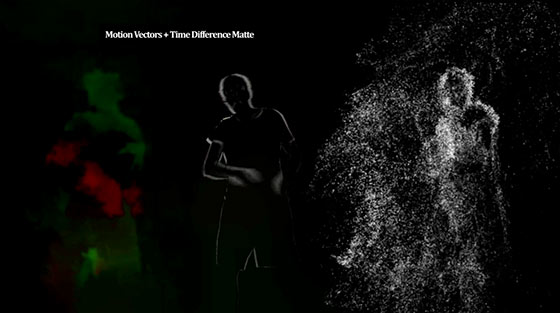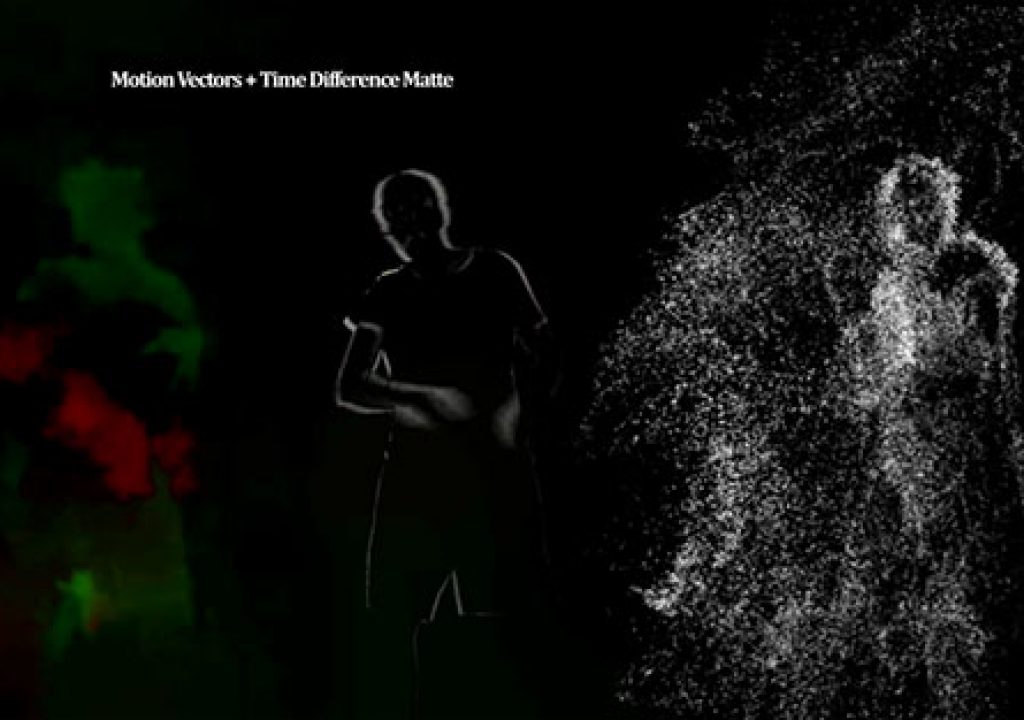
Here’s the latest week or so of assorted After Effects tutorials, tips, and scripts & plug-ins new and old.
The Trapcode Suite was updated with fixes and new features, especially for Particular. Red Giant also released several supporting tutorials. Here’s Harry Franks on What’s New in Particular 2.2 and Peder Norrby’s Particle Man – Particular 2.2 Motion Vectors (see process too, pictured above). We also get the start of series by Harry Frank, “Getting Started with Trapcode Particular 2” Intro, Emitter & Particle, Shading, Physics: Air, and Physics: Bounce. In the previous week, we also saw Trapcode Particular Essentials from Dan Stevers, a nice long tutorial that covers the essentials.
Galaxy Nebulas with Trapcode Particular by VinhSon Nguyen looks at creating galaxies to complement previous tutorials. Trapcode Particular is used to create the elements, with addition touches, and tips at the website.
Daniel Gies, author of 2 few big tutorial series on character animation in After Effects, has a few new tutorials, Quickly Designing Characters with Custom Photoshop Brushes and Automating Camera Focus Depth in After Effects. The latter uses a null layer and layer space transform expressions:
Video Copilot is offering a Free Halloween 3D Model Pack! for Element 3D and other 3D programs, Angie Taylor has some Halloween presets at her new sharing resource Effect Cafe, and Stefan Surmabojov collected A Very Scary And Super Spooky Halloween Roundup at AEtuts.
Harry Frank’s Element 3D NullTracker + LightCulling Preset explains free his presets that help you manipulate Video Copilot Element 3D object in the AE comp window (with embedded layer space transform expressions), and help control light intensity based on light’s angle to the camera.
AE Scripts is hosting 3 tutorials using Video Copilot Element 3D and the Elementary script in Create and integrate complex 3D animations into live footage without leaving After Effects, by Kevin Schires and TFX-tv. Peder Norrby has us looking forward to Elementary – Element 3D & Particular: Th©odule Robot too. Here’s Element 3D and Elementary Complex Animation Tutorial # 10 TFX tv:
Jonny Elwyn reminded us of How to create the perfect key, on SpliceVine’s August series on keying and matting by Jeff Foster. Here’s Jeff on Best Practices in Software Keying from his Video2brain course “Fundamentals of Compositing, Tracking, and Roto Techniques with After Effects:”
After Effects is memory-intensive, though painful slowness can’t be avoided if you use the ray trace renderer without CUDA support. Users looking for information about optimum memory settings can check the FAQ: What are optimum memory settings for best performance in After Effects CS4, CS5, CS5.5, & CS6? and the Help doc, and this intro:
Angie Taylor notes a Review of ‘After Effects CS6: Learn by Video’. Here’s a sample from that Video2brain course, Slowing Motion, Freezing a Frame, and Reversing Time:
Michael Hofer posted How To Use The Amazing Free New Preset “Cover Flow” at AEtuts. Cover Flow is the cover art UI effect made popular by iTunes. The new preset has “options to change the result like adding randomness to the position of the layers, adding blur to fake a depth of field and so on.” By the way, FxFactory offers free Mac-only plug-ins with the trial install, including CoverFlux. If you’re on Windows, another easy way to do the Cover Flow effect is with an After Effect project by Paul Tuersley; you just have to animate some sliders. See also a free project from Alex “dinners” and a tutorial by Mattrunks, Effet Coverflow 3D automatique sur After Effects, which includes the project in English. Here’s Michael Hofer on using his new free preset:
Todd Kopriva noted Standard Render Order and the Transform Effect from Adobe After Effects CS5: Learn by Video. There’s more from Raymond Radet in his tutorial, Understanding The Render Order In After Effects, which introduces the rendering pipeline with links to more on AE Help.
The rendering pipeline is now a lot more complicated than Masks > Effects > Geometric PARTS, and it can no longer be visualized with a simple graphic. If you’re looking for more, buy into Creating Motion Graphics in After Effects because you won’t see more clarity and graphic detail elsewhere (eyes glaze over at text-heavy resources like AE Help). See also How to Optimize Projects in Adobe After Effects CS6, a project-oriented excerpt from Mark Christiansen’s book (see Sample Content PDF).
Kevin Monahan ?noted Mishandling Pulldown by Chris & Trish Meyer, a collection of resources on frame rate and field order. Here’s Todd Kopriva’s intro to Fields and Interlacing:
Lester Banks noted Zack Lovatt’s post split() – SourceText from Comp Name, a handy expression that simplifies the process of renaming lower thirds versions, letting “you can change all the text from your Project Panel and have it propagate into each comp automagically.” Zack also provides an example After Effects project file.
For more on lower thirds and creating them in mass, see the mini-roundup Free Lower Thirds plus Additional Resources: Leverage Photoshop, Premiere, and After Effects right here on PVC.
Premium Beat collected 10 FREE After Effects Templates. They also noted 5 Free Transitions from Phil Borst, which includes a project file:
Mamoword has an update of their new tool OrientWorld, which ‘makes it very easy to place the center of your world where you want it to be – and in the new version you can even decide what you mean with “world center”.’ Here’s an overview of the update, and How to use OrientWorld with the mocha V3 camera solver:
Eran Stern has a New Tutorial – Beat Assistant Auto Edit, on the new script from Mamoworld, Beat Assistant.
Todd Kopriva provides 2 options in workaround for bug in shortcut (tap Shift) for opening the composition mini-flowchart. Here’s a demo of those features by Chris Meyer, which appeared in CS4:
Mindtransplant ClipExporter translates Final Cut Pro X projects to After Effects:
Digital Anarchy’s Beauty Box does an amazing job of reducing blemishes and wrinkles, but they also let you make people look worse with a free filter, Ugly Box. Using the same algorithm for selecting skin areas, instead of smoothing the skin texture, Ugly Box enhances it to bring out all the variations, wrinkles and blemishes. And of course, wrinkles and blemishes mean that someone is evil, older, and/or ugly!
4K movie / Beauty retouch from Foton inc. made the rounds on photo blogs, and like the work of LolaVFX, seems to have been made in Nuke and/or After Effects (translate automatically with Google Chrome), rather than some new software. Here’s a Foton example, and an intro by Andrew Devis, AE Basics 52: Paint 6 Spot & Blemish Removal:
Michael Hoffman advocates Content Aware Craziness in Photoshop for image distortion tasks:
Please note that these roundups are for quick review and comparison. There is almost always vital information from the originating authors at the links provided-and often free presets, projects, or stock footage too.

Filmtools
Filmmakers go-to destination for pre-production, production & post production equipment!
Shop Now













